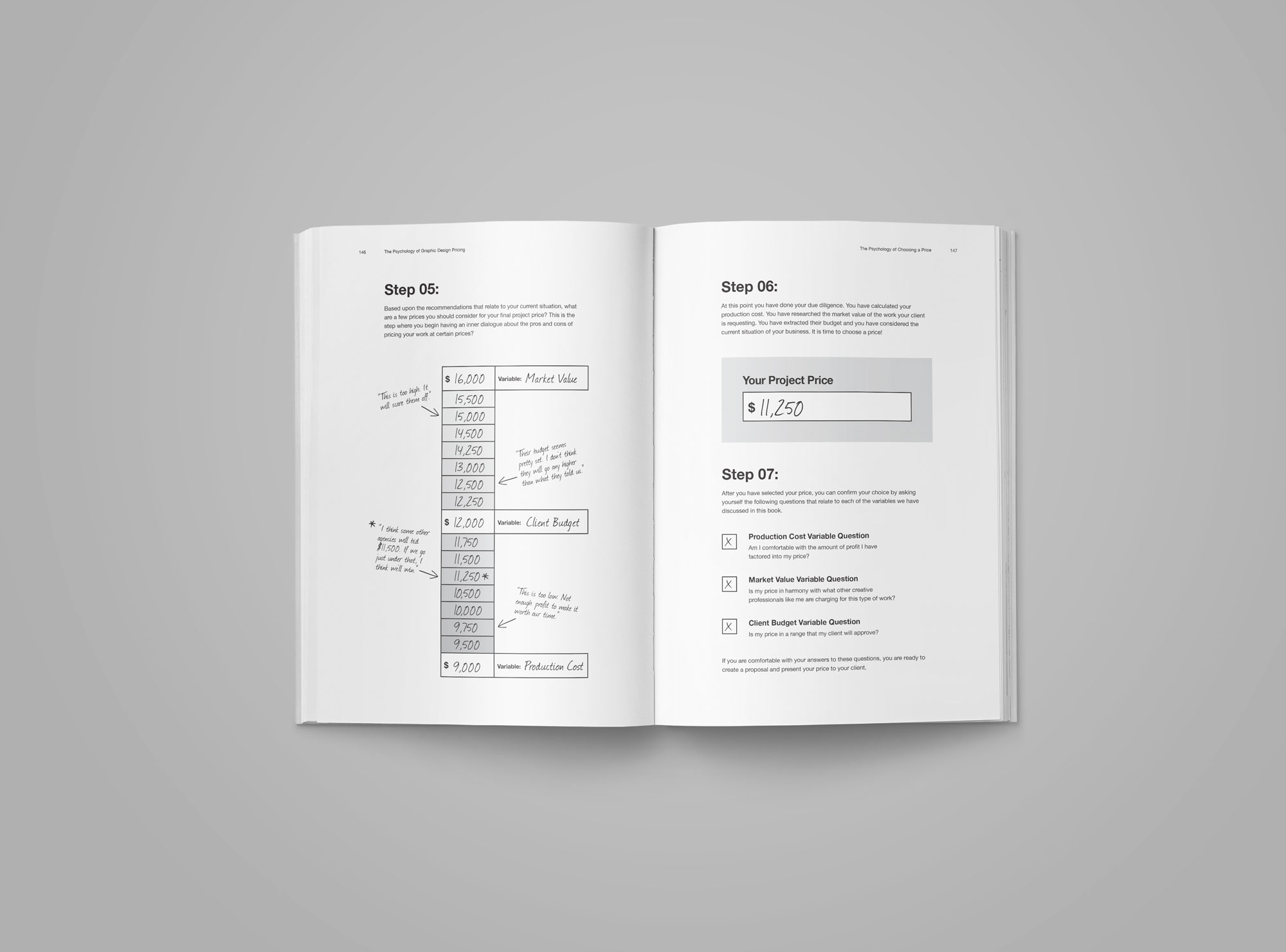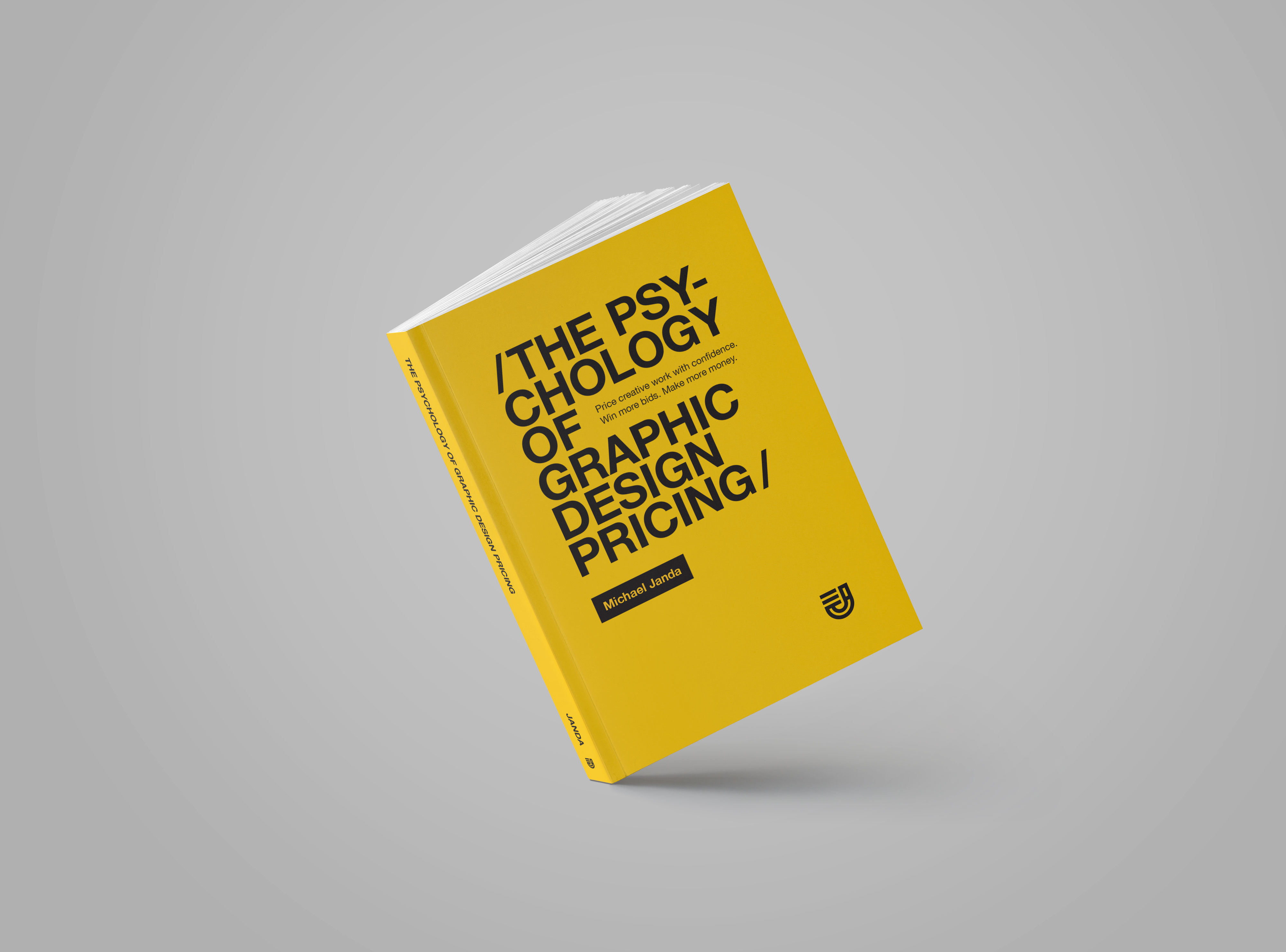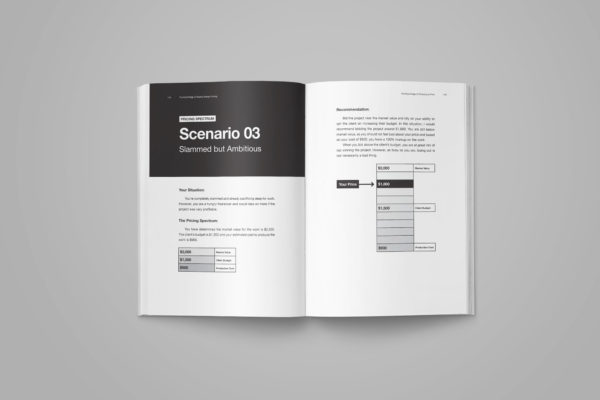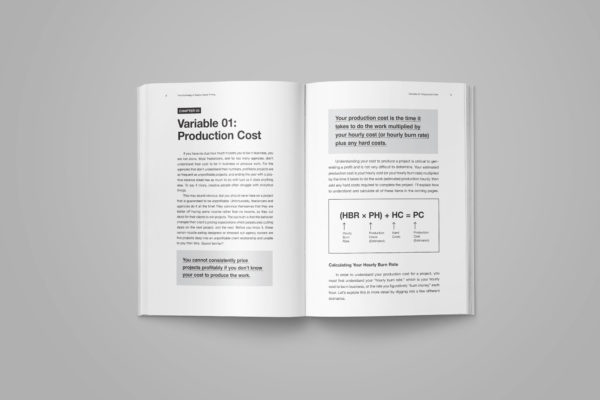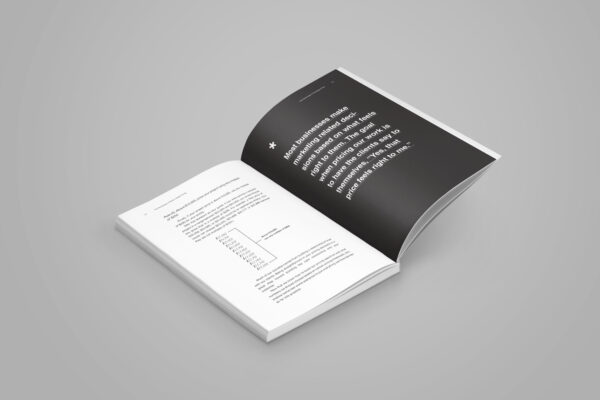When it comes to pricing their work, most designers are just pulling numbers out of thin air hoping to make a profit. This book changes that. No more guessing. Price your creative work with confidence. Win more bids. Make more money. I will show you how.
When it comes to pricing their work, far too many freelance designers and agencies merely guess what to charge their clients. As a result, profitable projects have as much to do with luck as they do anything else. In The Psychology of Graphic Design Pricing, you’ll learn how to take luck out of the equation by calculating the cost to produce your work, understanding its market value, and extracting your client’s budget. These three variables are used in a pricing spectrum, empowering you to price your work with confidence and profitability in every project opportunity.
Michael Janda is an award-winning creative director, designer, agency veteran, and author. For more than 20 years, Michael has worked with an esteemed client list including Disney, Google, Warner Bros., Fox, NBC, ABC, National Geographic, and many other high-profile brands. Michael’s book, Burn Your Portfolio: Stuff They Don’t Teach You in Design School but Should, was published in 2013 and is one of the top-selling books in the creative industry.
Step-by-step worksheets
Calculate production costs
Understand market value
Extract clients budgets
Bid the right project price
Increase profitability

Chapter 01 / The Pricing Spectrum
I introduce you to the pricing spectrum, the core concept of the book. The pricing spectrum is built using three variables: production cost, market value, and client budget.
Chapter 02 / Graphic Design and Profitability
This a short chapter emphasizing the importance of pricing creative work at a profit. For most of us design is “fun,” but that doesn’t mean we shouldn’t maximize our profitability.
Chapter 03 / Variable 01: Production Cost
I walk you through step-by-step process to understand your cost to produce design work. We explore three different business scenarios: part-time freelancer, full-time freelancer, and agency. Each has a slightly different approach to calculating production cost.
Chapter 04 / Variable 02: Market Value
The market value of a product or service is the price that someone is willing to pay for it. I will show you how to determine the market value of your creative work.
Chapter 05 / Variable 03: Client Budget
I teach you several different methods for extracting your client’s budget from even the most stubborn clients. This chapter also provides many tactics that empower you to encourage your clients to increase their budget when necessary.
Chapter 06 / Creating the Pricing Spectrum
Now that you understand the three variables (production cost, market value, and client budget), I’ll show you how to organize a pricing spectrum in preparation for choosing the right price for your project(s).
Chapter 07 / The Psychology of Choosing a Price
This chapter starts to bring it all together. I break down 12 different business scenarios, from “desperate for work” to “difficult clients,” and how each affects the way you should price your project(s). We also look at what numbers you should choose (i.e. $1,599 vs. $1,600 – which is best?).
Chapter 08 / Calculating Your Billable Hourly Rate
Every project that can be bid at a fixed price should be. However, there are some situations that merit billing by the hour. I’ll show you how to calculate your billable hourly rate and when to use it.
Chapter 09 / Pricing Presentation Strategies
Should you use commas in your prices? How should prices be itemized in your proposal? How does visual design affect the way your price is perceived by your client? I answer all of these questions and more in chapter nine.
Chapter 10 / Conclusion & Pricing Rules
This chapter unveils, eight major takeaways that will have a dramatic impact on your profitability and confidence when pricing your work.
